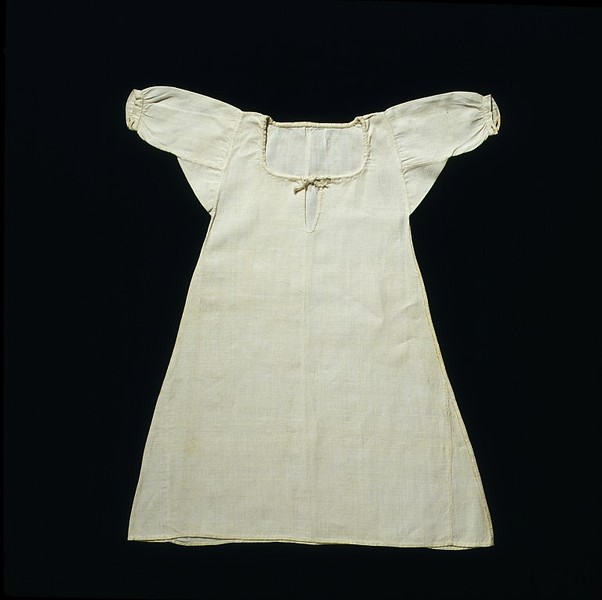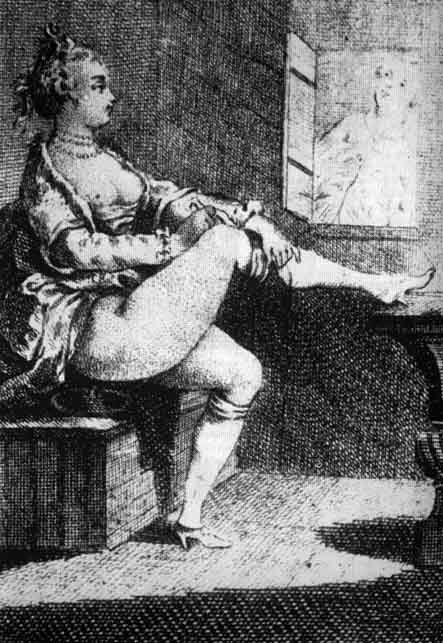To modern women the concept of a period can be irritating, painful and uncomfortable but we do have the advantage of modern sanitary pads or tampons. But what did the women of Versailles do; as a reader quite rightly pointed out: they wore no underwear! Or, rather, they wore no panties. Another thing we have is a far greater understanding of hygiene and the human body - particularly the female.
The doctors of the time still relied on the teaching of the humours of the body. It was considered common knowledge that women were prone to "hysteria" which was often thought to be a cause of the "female emotions". Thus, doctors considered the period to be nature's own way of attempting to right the wrong by letting out some of all that excess blood. After all, the same doctors had no hesitation when it came to tapping their patients for large quantities of blood. As it happens the prevailing perception was that a man could enjoy the "health benefits" of a period if he was blood-let.
There were doctors who claimed that the monthly flow actually protected a woman's health. In the 18th century doctors were baffled as to why women seemed to be less likely to fall victim of a sexually transmitted "pox". Eventually, they concluded that viruses could be carried out of a woman's body via her menstruation blood.
 |
| A woman cleaning her nether parts - probably very much needed during those days |
Interestingly, there seemed to have been a clear distinction between the perception of the period as a bodily function and the blood itself. As mentioned, it was considered healthy for a woman to bleed - it was even in accordance with divine order. The blood was a whole other matter. For centuries period blood was seen not only as foul but almost dangerous. One of the more extreme superstitions was that a woman's period blood could spawn nothing less than a demon. Others were that if a woman came into contact with another woman's blood she would miscarry; a dog would instantly lose its mind.
It should be said that by the early 18th century such theories were widely disregarded. One such dissenter was John Marten whose book of 1708 strongly rejected such nonsense as "ridiculous and foolish fancies" and that they had no "foundation of truth or reason to support them".
The humoral theory also led to the belief that a woman's menstrual flow was directly affected by a wide array of external and internal factors. These included the more logical ones like the woman's age or general health but also covered the more abstracts ones such as her temper. Dancing - for one - was considered to possess the power to either spontaneously spark the flow or make it heavier.
One thing that was understood was that no all women bleed the same. The doctors were rather perplexed by this and it made it even more difficult to predict for the individual woman.
What makes this particular subject difficult to examine is the taboo and often twisted perceptions that had been dodging the female flow for centuries. Most people today would agree that a woman's period is her own business and not necessarily something openly discussed or asked about - but the majority of the Western world no longer links a woman's period to downright superstitious happenings or divine punishment.
 |
| With white chemises such as this one even minor bleeding would easily show |
The idea of using fabric to absorb the liquid occurred early on. We know that ancient Egyptians used a sort of papyrus and the tip was apparently handed down through generations of women - and developed. By the 18th century French women would often take a piece of linen and dip it in vinegar. As it happens the women of Versailles would never experience anything similar to a commercially produced sanitary pad - these only appeared around 1880.
The taboo of a female menstruation was further enhanced by being connected to the only area of medicine that was largely left to women: midwifery. It was not until the 18th century that men began taking a closer interest in what exactly happened.
However, not all women used sanitary pads. For instance, the women of the peasantry rarely had something as luxurious as meat or food products high on iron. Especially during the winter when their diets became even more restricted it was not uncommon for women to cease menstruating. The same could be said for nuns who lived particularly cloistered lives and whose religious way of life often brought a meagre diet with it.
Unlike today, there seems to have been an understanding that a woman whose flow was light could go without the linen. A book on midwifery by Pierre Dionis from 1719 compares these women to "those who are forced to use Linen-Cloths". Likewise, it was not unusual for women to bleed on their chemises; one can only imagine how hard it was not to considering the aforementioned lack of panties.
 |
| An 18th century woman whose raised skirt clearly shows the lack of any type of panties |
As it happens, it was not only the blood that caused some head-scratching; the accompanying odour was a bit of a conundrum in itself. Some sources claims that the very scent of a woman's period acted as an aphrodisiac while others mentions how women would wear nice-smelling herbs to overshadow the scent.
For the women of Versailles the period was a beast with two heads. On one side it was a subject not to be talked of, something similar to a secret between women that men did their best to pretend not to know about. On the other it was vital to the hierarchy and succession. The queen and dauphine's sheets offered obvious signs of whether an heir could be expected - or whether the regal lady had failed in her dynastic duty. Undoubtedly, the high-quality sheets of Marie Antoinette caused her a great deal of pain until the birth of her first child. The tell-tale signs would often figure in her letters to her mother and with an increasing guilty tone. Maria Theresia demanded that all her daughters provided her with a detailed account of their "Générale" which must have been unpleasant in itself.
Marie Antoinette suffered from another period-related nuisance that many women throughout history can recognize. Her menstruations were extremely irregular. By 1779 the queen contracted measles in the spring and experienced a lapse of no less than four months where nothing happened. The courtiers may have held their breaths but as the young queen herself admitted there was no reason for it.
Irregular periods are quite common and the doctors of the age attempted to "promote the woman's course". Chamomile, mugwort and artemisia were thought to open the floodgates in the 17th century. In an age before pregnancy tests the unexpected pauses must have caused quite a few pregnancy scares or eventually disappointed hopes. In Marie Antoinette's case it luckily turned out to be nothing serious although her position suffered a great deal during her seven years of childlessness.
